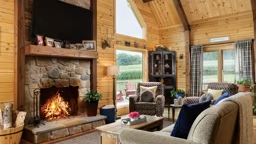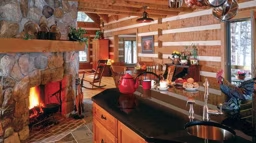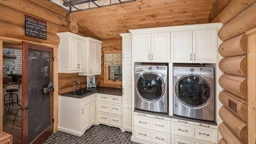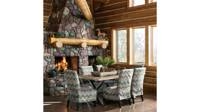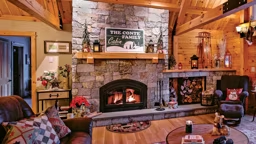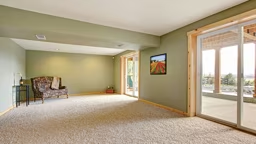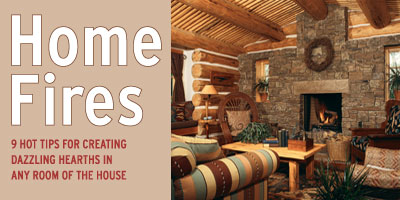 Come on. Admit it. One of the biggest reasons you're building a log home is that quintessential vision of comfort: a great book, beverage of your choice, cozy room and a warm hearth. One trip to a hearth retailer, however, and you’ll discover a bewildering array of new technology, which will leave you trying to pick a fireplace that’s a perfect match and scrambling to determine where it should go. Our checklist from the hearth pros gives you solid strategies for evaluating your hearth needs and figuring out how a fireplace can make the biggest impact in your new log home. 1 Decide if you want your hearth to create ambiance, heat your home, or both. Heating units, often as energy efficient as a furnace and rated accordingly, cost about 10 to 20 percent more than decorative units of the same size. 2 Check into local restrictions. Although wood may be plentiful, your local building department may forbid a wood-burning fireplace due to air-quality concerns. 3 Make sure the size of your hearth fits the space. Pleasing warmth is nice. Turning your great room into the Mojave Desert isn’t. 4 Visit your home site and use a tape measure, stakes and string to create the exact parameters of your home. This way, you’ll be better able to envision where the hearth should go and how its use will relate to the view, your entertainment needs and a host of other activities. 5 Consider your hearth’s placement. Most designers and architects recommend installing the hearth on an inside wall, often using it as a divider between rooms. 6 Create eye-opening appeal. The hearth’s viewing area can be open to the room on one, two (“see-through” and corner models), three (“peninsula”) or, if you’re really daring, four sides (“oasis”). 7 Install in heavily used areas. The great room is a natural location for a hearth. However, experts recommend installing the hearth in rooms that you use the most during winter. 8 Conduct a reality check. The most expensive fireplace option ($25,000 to $75,000 and up) is a traditional masonry fireplace. Some buyers who want energy efficiency in a traditional fireplace are opting to buy a Rumford (www.rumford.com). These are tall, shallow units that reflect more heat, and they boast streamlined throats to eliminate turbulence and carry away the smoke without losing heat. 9 Think about alternatives. The majority of fireplaces—about 75 percent, or more than half a million units annually—are no longer traditional brick and mortar, but are built in factories and then shipped to your home’s construction site. Factory-produced hearths are remarkably affordable, regardless of the product or the fuel they use. Even if you’re looking at a dream fireplace made from Colorado river rock that burns wood, you may be able to get a similar look for a fraction of the cost (think manufactured stone and a gas insert). Oh, and don’t forget to have a little planning fun. After all, this is one element of your home that will provide countless nights of contentment. |
9 Tips for Designing a Hearth
9 hot tips for creating dazzling hearths in any room of the house.




